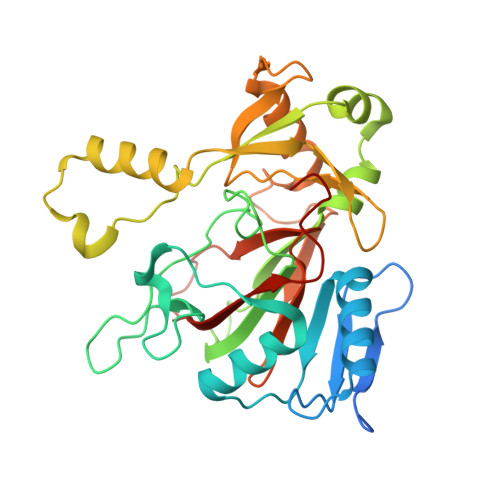Isonitrile Formation by a Non-Heme Iron(II)-Dependent Oxidase/Decarboxylase.
Harris, N.C., Born, D.A., Cai, W., Huang, Y., Martin, J., Khalaf, R., Drennan, C.L., Zhang, W.(2018) Angew Chem Int Ed Engl 57: 9707-9710
- PubMed: 29906336
- DOI: https://doi.org/10.1002/anie.201804307
- Primary Citation of Related Structures:
6DCH - PubMed Abstract:
The electron-rich isonitrile is an important functionality in bioactive natural products, but its biosynthesis has been restricted to the IsnA family of isonitrile synthases. We herein provide the first structural and biochemical evidence of an alternative mechanism for isonitrile formation. ScoE, a putative non-heme iron(II)-dependent enzyme from Streptomyces coeruleorubidus, was shown to catalyze the conversion of (R)-3-((carboxymethyl)amino)butanoic acid to (R)-3-isocyanobutanoic acid through an oxidative decarboxylation mechanism. This work further provides a revised scheme for the biosynthesis of a unique class of isonitrile lipopeptides, of which several members are critical for the virulence of pathogenic mycobacteria.
Organizational Affiliation:
Department of Plant and Microbial Biology, University of California Berkeley, Berkeley, CA, 94720, USA.


















